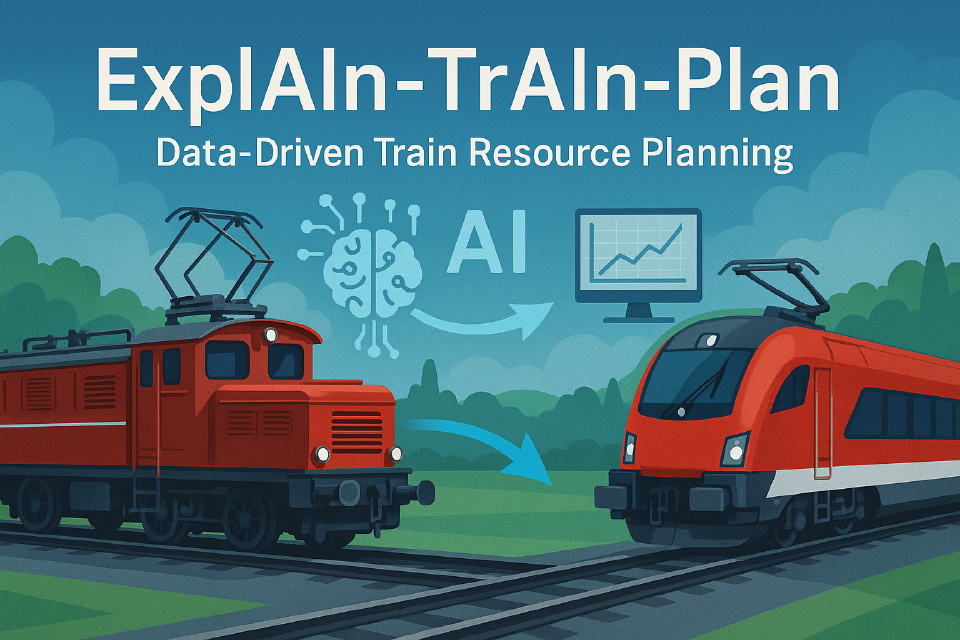BrAIn-Bridge management with AI for sustaiNable engineering
A new project by dwh GmbH and TU Wien was launched on 1 July 2025. ExplAIn-TrAIn-Plan is the follow-up project to VIPES and Green-TrAIn-Plan.
ExplAIn-TrAIn-Plan combines the results of the two previous projects in order to combine energy consumption and resource planning. The aim of VIPES was to develop an effective interface between optimisation-based resource planning in railway systems and simulation-based evaluation of the plans. In Green-TrAIn-Plan, the energy consumption of timetables and rotations was optimised using simulations and AI methods. ExplAIn-TrAIn-Plan now also includes production variants.
Currently, rail transport companies use a variety of complex methods for resource planning, which often involve considerable manual effort by the responsible planners. The increasing complexity of railway networks and the interdependencies between infrastructure and resource planning, especially in traction unit deployment planning, represent significant obstacles to the development of energy-efficient and reliable timetables. Train types are often selected based on historical precedents or company preferences rather than energy efficiency or robustness.
While it is possible to optimise individual rotations manually, overall system optimisation, consisting of up to several hundred rotations, is no longer feasible without AI-based support. Such support for energy-efficient train resource planning is highly innovative and urgently needed.
The use of AI and simulation is proposed to develop data-driven and experience-based, explainable planning methods for train resource planning, taking into account different production variants. With the help of detailed data on infrastructure, fleet and energy consumption, a significant reduction in energy consumption is to be achieved.
Building on the VIPES and Green-TrAIn-Plan projects, the new project pursues a holistic approach in which the choice of train formations is embedded in a system of cycles.
Cover picture was created with the assistance of DALL-E.
